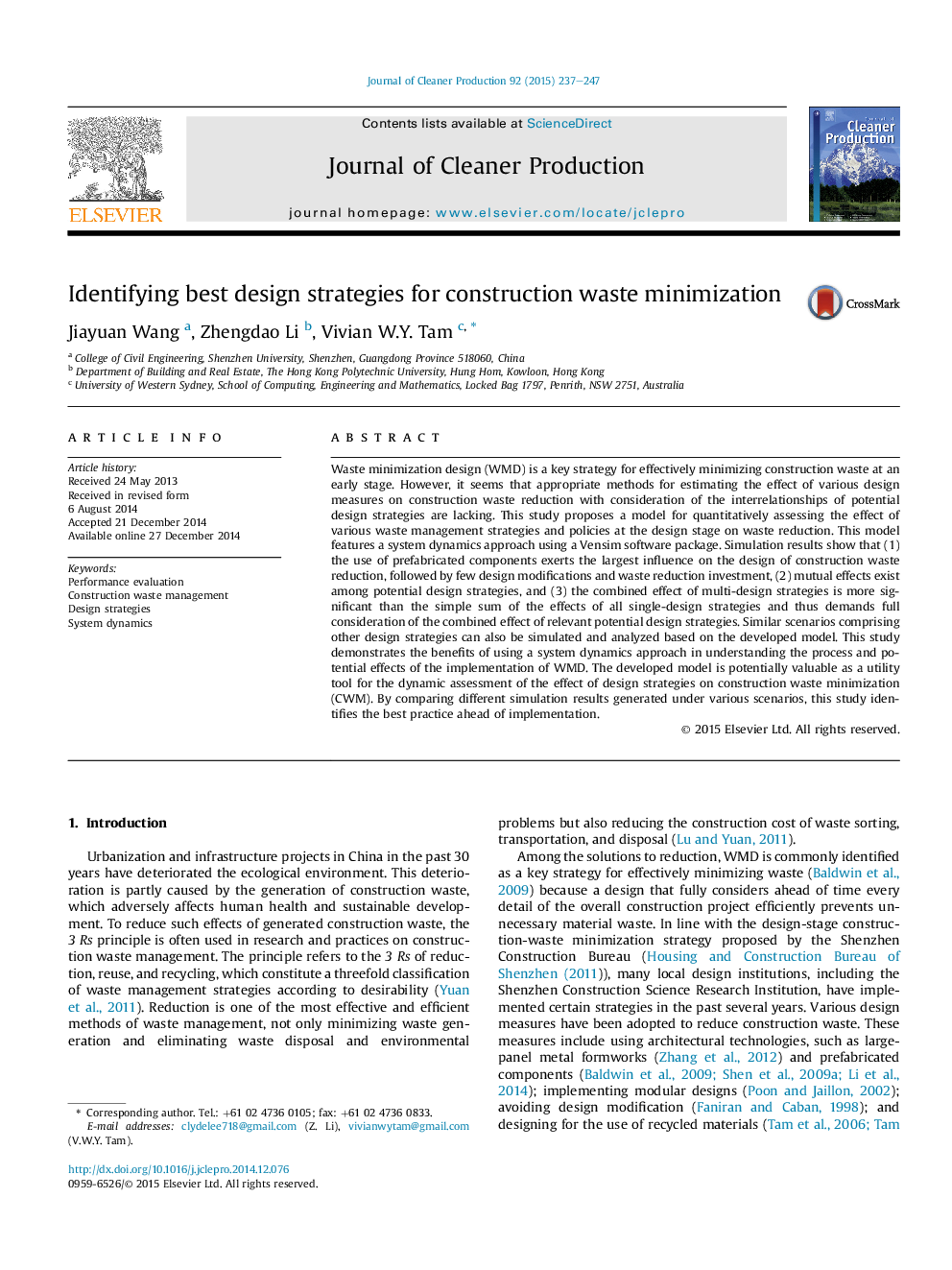| Article ID | Journal | Published Year | Pages | File Type |
|---|---|---|---|---|
| 1744640 | Journal of Cleaner Production | 2015 | 11 Pages |
Waste minimization design (WMD) is a key strategy for effectively minimizing construction waste at an early stage. However, it seems that appropriate methods for estimating the effect of various design measures on construction waste reduction with consideration of the interrelationships of potential design strategies are lacking. This study proposes a model for quantitatively assessing the effect of various waste management strategies and policies at the design stage on waste reduction. This model features a system dynamics approach using a Vensim software package. Simulation results show that (1) the use of prefabricated components exerts the largest influence on the design of construction waste reduction, followed by few design modifications and waste reduction investment, (2) mutual effects exist among potential design strategies, and (3) the combined effect of multi-design strategies is more significant than the simple sum of the effects of all single-design strategies and thus demands full consideration of the combined effect of relevant potential design strategies. Similar scenarios comprising other design strategies can also be simulated and analyzed based on the developed model. This study demonstrates the benefits of using a system dynamics approach in understanding the process and potential effects of the implementation of WMD. The developed model is potentially valuable as a utility tool for the dynamic assessment of the effect of design strategies on construction waste minimization (CWM). By comparing different simulation results generated under various scenarios, this study identifies the best practice ahead of implementation.
